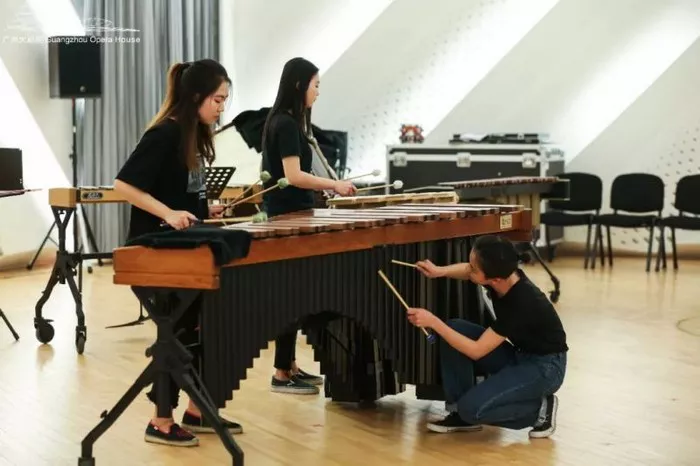The xylophone, a percussion instrument with ancient origins, has undergone significant evolution over the years. In the realm of contemporary music, the modern xylophone stands as a testament to innovation while preserving the instrument’s rich historical roots. This article delves into the elements that define the modern xylophone, examining its construction, tuning, and diverse applications across various musical genres.
Evolution of the Xylophone: From Ancient Origins to Modern Mastery
The xylophone can trace its roots back to ancient Asia and Africa, where similar instruments were crafted using wooden bars laid out in varying lengths to produce distinct pitches. Over time, this rudimentary concept evolved, and by the 19th century, the xylophone had found its way into Western orchestras, thanks to the ingenuity of instrument makers who refined its design.
Construction of the Modern Xylophone
Modern xylophones are meticulously crafted instruments that combine tradition with contemporary manufacturing techniques. The key components of a modern xylophone include wooden bars, resonators, a frame, and a stand. The bars, typically made from high-quality rosewood, are precision-tuned to achieve specific pitches. The resonators, often constructed from materials like aluminum or synthetic materials, enhance the instrument’s tonal qualities by amplifying and sustaining the sound.
The frame, which holds the bars and resonators in place, is commonly made of wood or metal, providing stability and durability. The stand supports the xylophone at an ergonomic playing height, ensuring that musicians can perform comfortably for extended periods.
Tuning and Range
One of the defining features of the modern xylophone is its meticulous tuning. Unlike its historical counterparts, modern xylophones are chromatically tuned, meaning they encompass the entire range of Western musical notes. This chromatic tuning allows xylophone players to navigate various musical genres, from classical to contemporary, with ease.
The tuning process involves carefully adjusting the length and thickness of each wooden bar to achieve precise pitches. This meticulous attention to detail ensures that the modern xylophone can seamlessly integrate into ensembles, providing a clear and vibrant tonal presence.
Materials and Innovations in Xylophone Construction
In recent years, advancements in materials and construction techniques have brought about innovative changes in xylophone design. While rosewood remains a popular choice for bars due to its rich tonal qualities, environmental concerns and regulations have led to the exploration of alternative materials such as synthetic composites. These materials aim to replicate the desirable characteristics of traditional wood while addressing sustainability issues.
Advancements in resonator design, including the use of lightweight metals, have contributed to improved projection and resonance. Additionally, some modern xylophones feature height-adjustable frames and collapsible designs, enhancing portability and convenience for musicians on the go.
Versatility in Musical Genres
The modern xylophone’s versatility extends beyond traditional orchestral settings. Contemporary musicians across various genres, including jazz, pop, and world music, have embraced the xylophone for its unique timbre and expressive capabilities. Jazz vibraphonists, for example, often incorporate xylophones into their setups to add a distinct percussive element to their performances.
In the realm of popular music, the xylophone has found its way into studio recordings and live performances, adding a touch of sophistication and nostalgia to the sonic landscape. Its bright and crystalline tones can cut through dense arrangements, making it a valuable asset in the hands of skilled performers.
Educational Significance
The modern xylophone plays a pivotal role in music education, serving as a fundamental instrument for students learning the basics of music theory and percussion. Its straightforward layout and intuitive design make it accessible to beginners while offering a platform for more advanced techniques as students progress in their musical journey.
Educational xylophones often feature color-coded bars or notation markings to aid beginners in learning to read music and understand the relationships between different pitches. This pedagogical approach not only facilitates the development of technical skills but also nurtures a love for music from an early age.
See Also: What Are The Notes On A Xylophone: A Quick Guide
Conclusion: A Harmonious Blend of Tradition and Progress
In conclusion, the modern xylophone represents a harmonious blend of tradition and progress in the world of percussion instruments. From its ancient origins to its integration into contemporary musical landscapes, the xylophone has stood the test of time. Meticulously crafted with precision-tuned bars, innovative materials, and a range that spans across genres, the modern xylophone continues to captivate audiences and inspire musicians worldwide. As we embrace the future of music, the xylophone remains a shining example of how instruments can evolve while retaining the essence of their historical roots.


